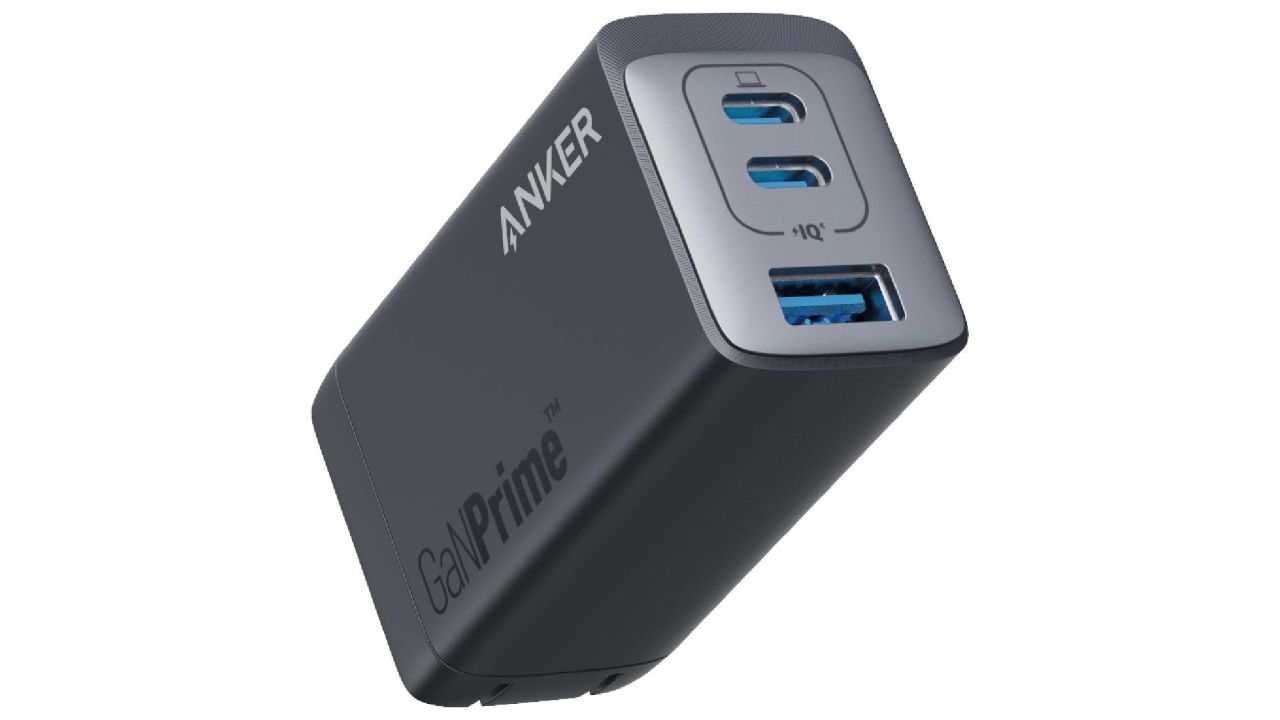With the Flair Neo Flex, you can pull a shot of real espresso — fluffy crema and all — for under $100. Will it be easy? Not really. Will the coffee taste as balanced, sweet and smooth as it does at your specialty coffee shop? Not quite. But I repeat: Spend $99 on this ugly hunk of plastic and you can make good espresso, even if you don’t have a proper coffee grinder.
Flair can sell the Neo Flex for just $99 because it’s a manual espresso maker, meaning there’s no expensive pump to force water through your coffee. Instead, it relies on a lever — plus a little hard work — to reach the requisite 9 BARs of pressure necessary to produce espresso. And when this system works well, the results are striking. But as you might expect with a cheapo espresso maker that looks more like a kid’s toy than a coffee machine, the Neo Flex has a few head-scratching quirks.
The Flair Neo Flex is an imperfect manual espresso maker, held back by its cheap components and frustrating design. But for under $100, it remains a compelling option for coffee enthusiasts and beginners who want to pull shots of real espresso on a shoestring budget.
What I liked about it
You can make real espresso for $99
The Flair Neo Flex has everything you need to make espresso — no fancy grinder, coffee scale or WDT tool required. Flair makes that possible with its bright red 12 to 18-gram capacity “flow-control portafilter.” (The portafilter is the basket you fill with ground coffee).
Whereas a normal portafilter relies on extremely fine coffee to produce enough pressure to make espresso, pressurized portafilters ramp up the BARs by pushing the liquid through a small hole. This extra oomph is enough to create crema, the dense layer of foam that’s the product of hot, pressurized water emulsifying the beans’ oils and releasing carbon dioxide gas. In short, put coffee grounds in this thing and you’re guaranteed a shot of real espresso.

But all else equal, coffee made with a pressurized portafilter tastes worse than proper espresso — and that’s a fact. Without finely ground beans, you can’t extract enough of the coffee. That was my experience with the Flair’s flow-control brews, which were weak, watery and lacking in complexity and body. It’s espresso without a soul.
When paired with a competent grinder (in my case, the KINGrinder K6), you can make some full-bodied, nutty, if slightly sour, espresso. If you drink milk drinks (more forgiving than plain espresso), you’ll find you can make cafe-quality coffee, provided you use freshly ground, quality beans. Nailing espresso is harder — I don’t think I got there, even after two weeks with the Flair — but enthusiasts swear it’s possible and in theory, that makes sense. Just prepare yourself for lots of trial and error.
You can tweak each shot
The heading for this section used to read “It’s easy to tweak each shot.” But then I reconsidered, remembering how unintuitive and finicky the workflow is for this thing (more on that below). Still, the fact remains that you do have control over each shot, even if the process is frustrating.
That’s an advantage over entry-level espresso machines, many of which afford little control over the brewing process. But with the Neo Flex you can control how much pressure (there’s a crude pressure gauge) and how long you pull a shot because, well, you’re doing all the work yourself. If you find your espresso tastes a little sour (aka under-extracted), you can extend your pull and note the changes in flavor. The tradeoff is that, unlike a push-button espresso machine, there’s a lot of room for error and a head-spinning array of brewing variables, especially for novices who don’t know what a “pre-infusion” or “brew ratio” is.
It’s lightweight and small
A lot of Flair proponents are psyched about the Neo Flex’s size. Weighing just over 4.5 pounds and measuring 11.5 inches long and 10.5 inches high, it is quite small, taking up less counter space than my Cuisinart 4-Slice Toaster. And compared to most espresso machines, this thing is light and tiny.
Its small size is a boon for apartment dwellers with cramped kitchens and espresso fanatics who want to travel with a machine. For the latter group, Flair even sells a carrying case (an extra $20 when you buy it in a bundle, or $30 a la carte). Personally, I think it’s insane to carry this thing around but if you need good espresso on your next camping trip, packing the Neo Flex is an option.
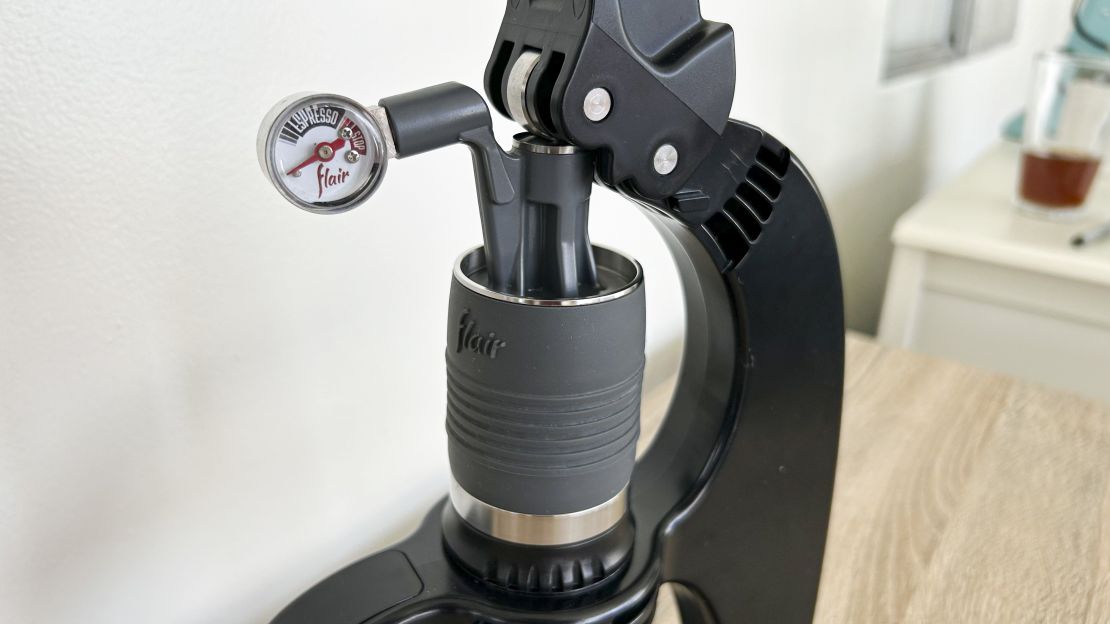
There’s an active Flair community
Aside from tired memes, photos of your aunt’s dog and the marketplace, Facebook still has active communities of hobbyists, including the “Brew with Flair” group, which boasts 27,500 members at the time of writing. The subreddit r/FlairEspresso is similarly large with 12,000 subscribers.
It was from these forums — and not from the useless Flair manual — that I learned how best to pull a shot with the Neo Flex. Now, I grind 12 grams of beans, preheat the heck out of all the components, brew with a long pre-infusion and extend my shots far beyond the recommended 20-25 seconds. These are all tips I gleaned from Flair enthusiasts, not Flair’s manual or video brewing guide, which are vague at best and misleading at worst. In other words, when you buy a Flair, you also buy into a community of coffee nerds.
What I didn’t like about it
The manual is vague and misleading
When I opened Flair’s manual, I expected to find detailed information about how to use the Neo Flex. That is, after all, what manuals are for. But what I got was a hazy step-by-step guide that overlooked key details. To begin with, it only explains how to brew with the flow-control portafilter, including just a few sentences about needing to “dial in” the bottomless portafilter. That information is incomplete.
Before brewing my first shot with the flow-control portafilter, I wondered how fine I should grind my coffee. Like sugar? Table salt? Sea salt? All they say is “avoid coffee grounds that are too fine.” The instructions also say nothing about how much pressure one should apply while tamping, nor do they explain how to pull a shot in detail. Grind some beans (but not too fine!), throw them in the flow-control portafilter and tamp “evenly.” The instructions for pulling a shot are similarly brief: “Target a 25-second extraction in the espresso zone.”
The video tutorial is much better, providing more guidance regarding the grind size and cleaning process, yet it still lacks more crucial brewing information. I speculate that Flair keeps everything simple to avoid alienating beginners. I get that. But rather than neglecting coffee nerds, it would be better if Flair included two guides: a quick-start version for novices and a more detailed manual for experts.
It feels cheap and flimsy
You’ll need to cut a few corners if you sell an espresso maker for $100. In this case, Flair cheaped out on build quality, creating an espresso maker entirely out of an “ultra-light polymer blend,” better known as cheap plastic.
Having really cranked this thing to pull shots, leaning over the lever to add extra weight, I admit that the Neo Flex is stronger than it looks. I also never encountered anyone who broke the plastic lever or base on online forums. And even if I did snap the Neo Flex’s arm, it’s covered by a warranty for a year.
That said, the Neo Flex sounds and feels like it might crack at any moment. When you pull a shot, the plastic flexes and there’s an unsettling creaking noise. I don’t count that as a deal breaker but when I see sturdy stainless steel home espresso machines, I look on in envy.
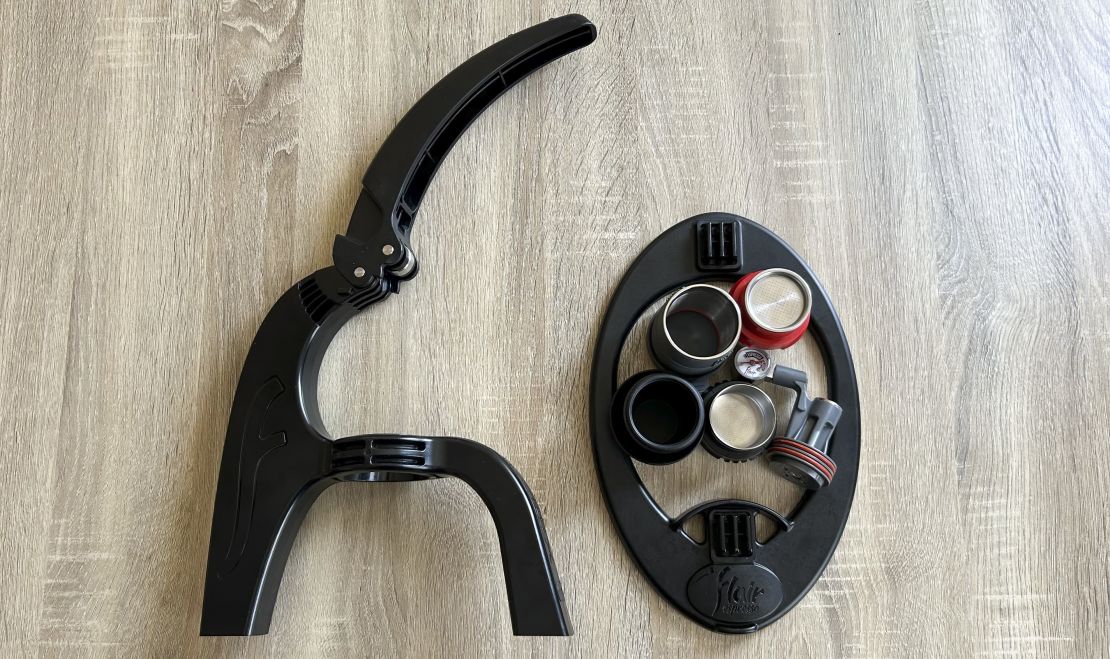
Pulling a shot is a fussy, frustrating experience
Most people wake up grumpy, tired and desperate for a pick-me-up. So fiddling around with an ugly lever-action espresso machine for 10 minutes to get a cup of coffee may sound like a sick joke.
But that’s about how long it takes to make a cappuccino with the Flair if we include the time it takes to grind beans with a manual grinder, froth milk, pull a shot and clean up. The workflow is very fussy.
First, you have to boil your water, which you’ll use to heat the brew chamber. (Despite Flair calling this step “optional,” you must do this if you want to brew well-extracted espresso). Flair provides a small rubber cap for this but you really ought to throw all the brew components in a bowl of boiling water. Then, after weighing and grinding your coffee, you’ll tamp the grounds into the portafilter with Flair’s dinky plastic tamper.
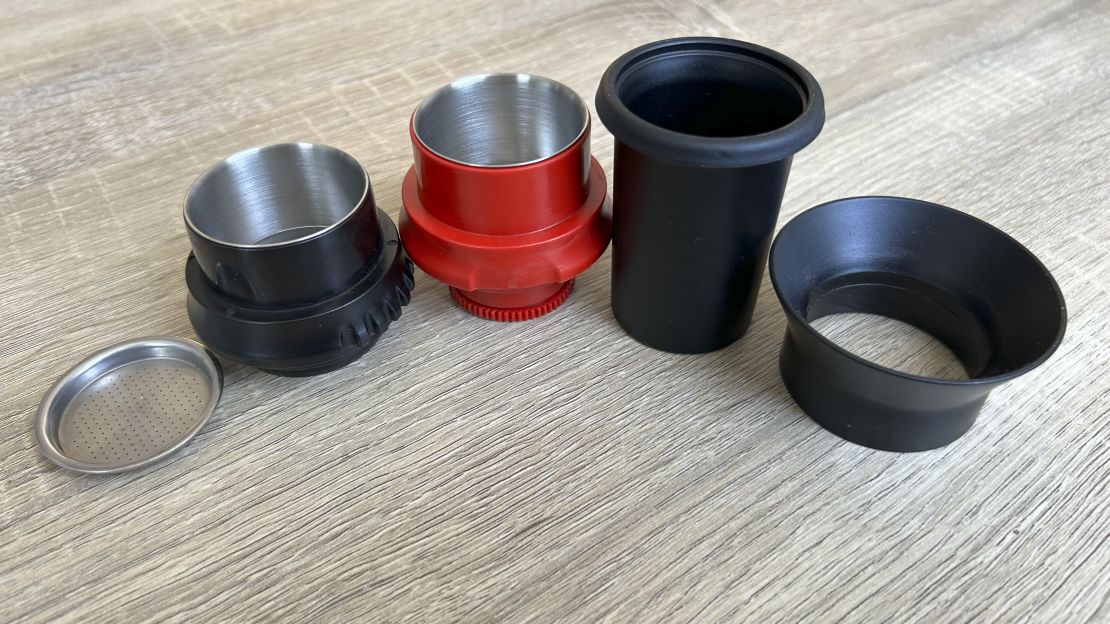
Pulling the shot takes time too — and it isn’t a pleasant experience. Getting the piston inside the brew chamber feels awkward, and if you misplace it or add too much water, you’ll have to start over because water will start flowing up around the piston.
Oh, and unless you have a scale that’s small enough to fit between the Neo Flex’s tiny base (mine was not), you won’t be able to weigh your shot and will have no idea what your brew ratio is.
Cleanup is also a chore. Since there’s no drip tray, excess espresso will leak onto your kitchen counter as you grab your mug. And cleaning the brew chamber and portafilter, both of which are quite hot, is messy and painful (literally).
I haven’t even gotten to the most time-consuming part: troubleshooting the shot itself. To some extent, this is true of all home espresso. It takes time to dial in your equipment. Though many people relish this process, some won’t have the patience to tweak water temperature, brew time, brew ratio, grind size, pressure and other variables. Remember that you can’t save any settings on the Neo Flex either. You either take notes and gradually adjust variables, or you won’t pull consistent shots.
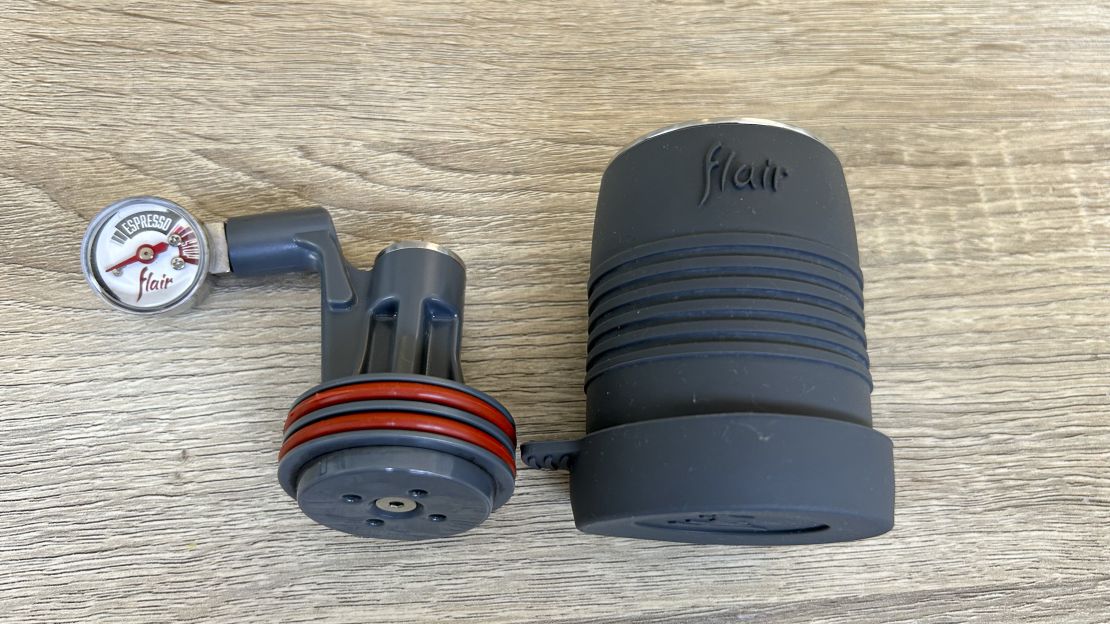
How it compares
In our testing, we found the Rok EspressoGC was the best manual espresso maker, and I can see why. It pulls great shots, is made of metal and has two levers for applying pressure. It’s also $229, more than twice the Neo Flex’s price.
While that sounds expensive, manual espresso machines get quite pricey. Flair’s top-of-the-line model, the 58+, is $640, boasting a built-in preheater, a cute “shot mirror,” a walnut-handled portafilter and other premium flourishes. And if you really want to drop cash, La Pavoni, a 100-year-old-plus Italian company, sells a chromed-out professional lever espresso machine for $1,281.
But if you’re interested in the Neo Flex and other budget manual espresso makers, I recommend looking at the Flair Classic (from $165), Wacaco Picopresso ($129) and Hugh Leverpresso ($130). The Flair Classic is like a Neo Flex with better components, though the base model lacks a pressure gauge. The Picopresso is a smaller, ultra-portable coffee maker — also lacking a pressure gauge — that uses a horizontal piston (and not a lever) to pull shots. Finally, the Leverpresso is a dual-lever device, like the EspressoGC, that includes pressurized and normal portafilters, allowing beginners to pull shots without an espresso grinder. At this price point, each espresso maker has its own drawbacks, whether it’s omitting a pressure gauge, using cheap components or including just one type of portafilter. Which model is right for you depends on your skill level and expectations. The Neo Flex makes sense for cash-strapped coffee snobs or specialty espresso beginners.
Bottom line
If the Neo Flex weren’t so cheap, I’d tell everyone to skip it and buy a Leverpresso, a Flair Classic or a Breville Bambino. But at $99, it’s easy to overlook everything I hate about it — the terrible manual, cheap components and fussy workflow. Where else can you get a device that makes real espresso for under $100? The Moka Pot and Aeropress are good but they make strong coffee, not espresso. Pod machines like the Nespresso are convenient and make something like espresso (you even get fake crema!), but the coffee doesn’t taste very good, and you can’t use your own beans. And so you’re left with the Flair Neo Flex. It’s a flawed device but it’s the closest you’ll get to great espresso for under $100.




















